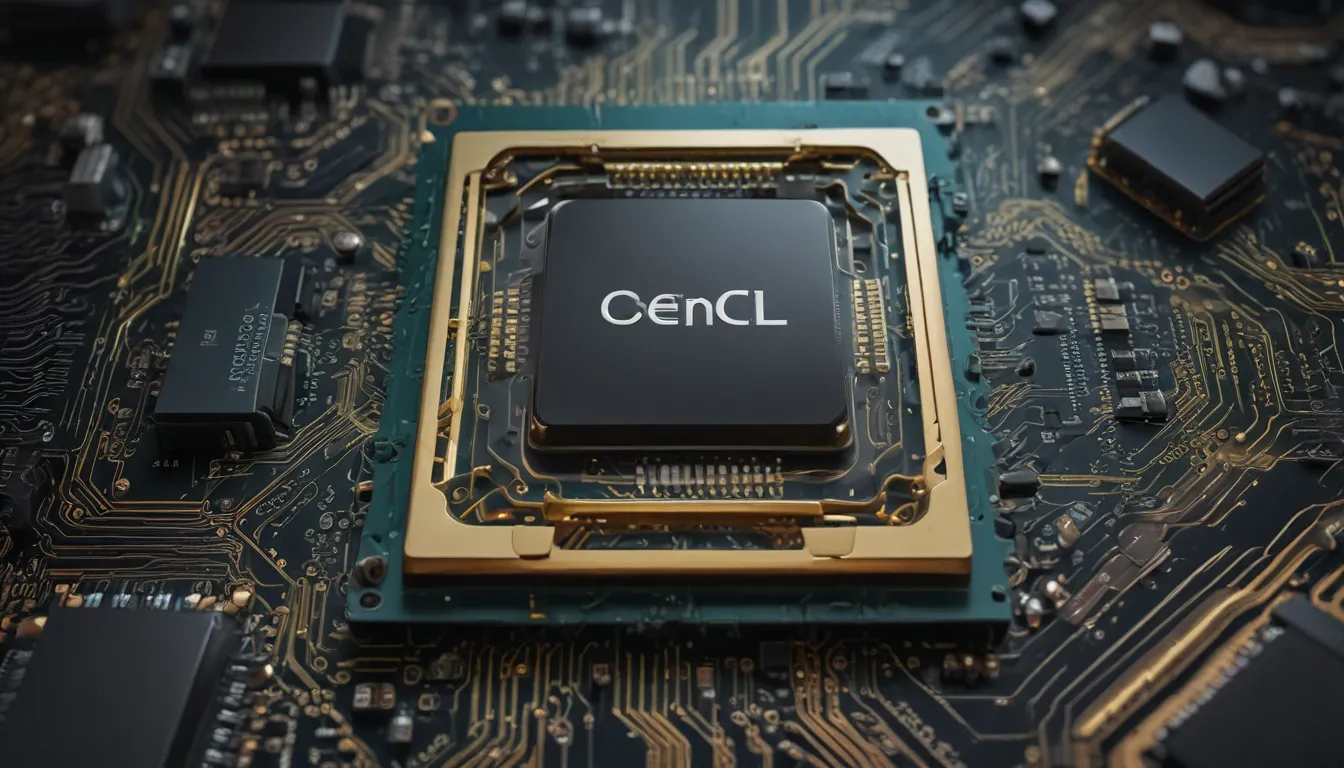A Note About Images: The images used in our articles are for illustration purposes only and may not exactly match the content. They are meant to engage readers, but the text should be relied upon for accurate information.
Are you ready to delve into the world of parallel computing and unlock the full potential of diverse hardware platforms? OpenCL, short for Open Computing Language, is here to revolutionize the way developers create applications that run faster and more efficiently by tapping into the computational power of CPUs, GPUs, and other processing units. In this article, we will explore 11 essential facts about OpenCL, shedding light on its significance, capabilities, and applications. Whether you are a seasoned professional or a newcomer to the field of parallel computing, these insights will provide you with a comprehensive understanding of OpenCL’s role in driving computational advancements. Let’s embark on a journey to uncover the fascinating world of OpenCL and its impact on the ever-evolving landscape of parallel computing.
Key Takeaways:
- OpenCL is a powerful tool that allows developers to create applications that run faster and more efficiently by tapping into the full potential of different types of hardware, like CPUs and GPUs.
- OpenCL is widely supported and can be used across a variety of devices, making it easier for developers to create applications that work seamlessly on different platforms.
OpenCL: An Open Standard
OpenCL is an open standard for parallel programming of heterogeneous systems, allowing developers to harness the computational power of CPUs, GPUs, and other accelerators using a single programming framework. This open nature of OpenCL promotes collaboration within the developer community, enabling knowledge sharing and optimized code for diverse applications.
Supported by Major Hardware Manufacturers
Leading hardware manufacturers such as Intel, AMD, NVIDIA, and ARM have embraced OpenCL, integrating support for the standard into their products. This widespread adoption ensures that OpenCL can be utilized across a broad spectrum of devices, enabling developers to create applications that leverage the full potential of modern hardware.
High-Performance Computing with OpenCL
One of the key advantages of OpenCL is its ability to unlock the potential for high-performance computing across diverse platforms. By enabling parallel processing on different types of hardware, OpenCL empowers developers to create applications that deliver exceptional performance and efficiency.
Unified Programming Model
With OpenCL, developers can utilize a unified programming model to target a variety of devices, regardless of their underlying architecture. This flexibility allows for the efficient utilization of available resources, making it easier to develop applications that can take advantage of the parallel processing capabilities of modern hardware.
Cross-Platform Development Made Easy
OpenCL’s cross-platform capabilities enable developers to create applications that can run seamlessly on a wide range of devices, from desktop computers to mobile devices. This versatility is particularly valuable in today’s computing landscape, where heterogeneous systems are increasingly prevalent.
Enhancing Graphics Processing
In addition to its applications in general-purpose computing, OpenCL plays a crucial role in enhancing graphics processing. By leveraging the parallel processing capabilities of GPUs, OpenCL enables developers to create visually stunning and immersive experiences in applications ranging from video games to professional design software.
Empowering Scientific and Engineering Applications
The parallel computing capabilities of OpenCL make it an invaluable tool for scientific and engineering applications. From simulations and modeling to data analysis and visualization, OpenCL enables researchers and engineers to tackle complex computational tasks with remarkable efficiency.
Driving Advancements in Artificial Intelligence
OpenCL extends its versatility to the realm of artificial intelligence, where it serves as a foundational technology for accelerating neural network training and inference. By leveraging the parallel processing capabilities of GPUs and other accelerators, OpenCL contributes to advancements in machine learning and AI-driven applications.
OpenCL in Medical Imaging
OpenCL plays a pivotal role in accelerating image processing and analysis in the field of medical imaging. Its ability to harness the computational power of diverse hardware components enables the development of sophisticated medical imaging applications that aid in diagnosis, treatment planning, and research.
Diverse Development Environments Supported
Developers can leverage OpenCL within a variety of development environments, including popular programming languages such as C, C++, and Python. This broad compatibility ensures that OpenCL can be seamlessly integrated into existing workflows, empowering developers to tap into the potential of parallel computing without significant barriers.
Collaborative Innovation with OpenCL
The open nature of OpenCL fosters collaborative innovation within the developer community, enabling the sharing of knowledge, best practices, and optimized code for diverse applications. This collaborative ethos contributes to the ongoing evolution of OpenCL as a versatile and impactful technology for parallel computing.
Conclusion
In conclusion, OpenCL is a powerful framework for parallel computing, offering a versatile solution for harnessing the computational capabilities of diverse hardware platforms. With its open standard and broad industry support, OpenCL continues to play a pivotal role in enabling efficient parallel processing for a variety of applications. Embracing OpenCL empowers developers to unlock the full potential of heterogeneous computing, driving innovation and performance in the ever-evolving landscape of technology.
FAQs
-
What are the key advantages of using OpenCL for parallel computing?
OpenCL offers the advantage of portability, enabling developers to write code that can be executed across various hardware platforms, including CPUs, GPUs, and FPGAs. This versatility allows for efficient utilization of available resources and facilitates performance optimization for diverse computing tasks. -
How does OpenCL contribute to enhancing computational performance?
OpenCL facilitates parallel computing by enabling the simultaneous execution of tasks across multiple processing units. By leveraging the computational power of different hardware devices, OpenCL enhances performance and accelerates the execution of complex algorithms, making it an invaluable tool for demanding computational workloads.
Your Feedback Matters!
We are committed to delivering trustworthy and engaging content that brings diverse insights and information to our readers. Each fact on our site is contributed by real users like you, ensuring the highest standards of accuracy and reliability. Trust in our commitment to quality and authenticity as you explore and learn with us.






